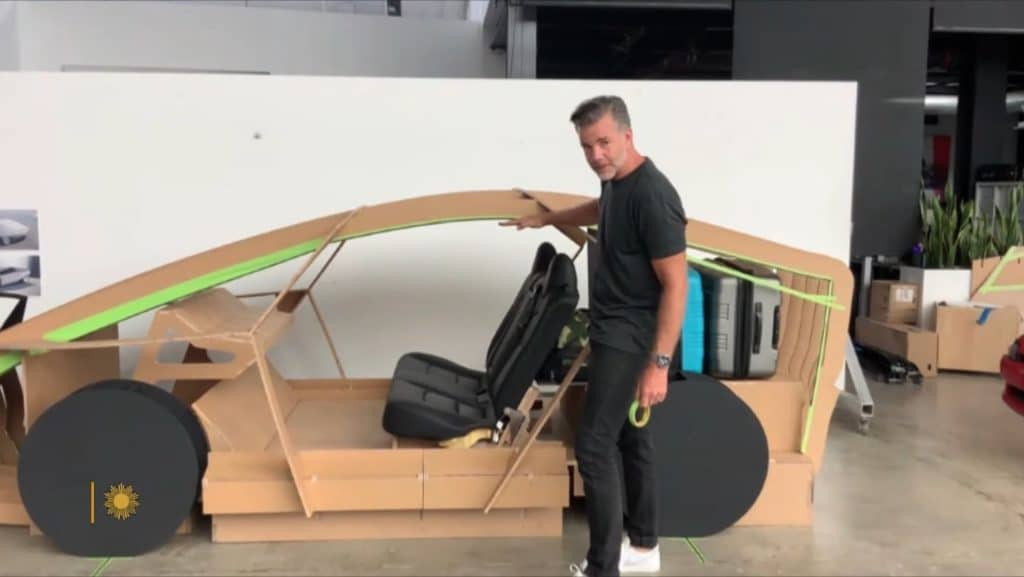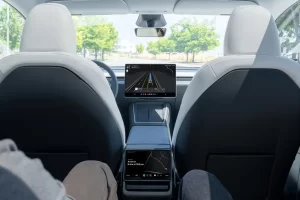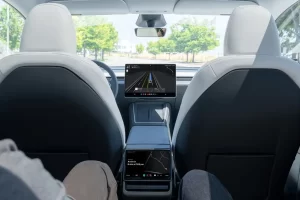- 🕵️♂️ The first sighting of a camouflaged Tesla Robotaxi “Cybercab” prototype was reported near Warner Bros. Studio in Burbank.
- 🚗 The prototype, likely to be a two-seater, appeared smaller than the Model Y and was spotted performing data collection.
- 📸 The vehicle is heavily camouflaged with bright yellow wraps and dummy body panels, resembling the Robotaxi concept from Elon Musk’s biography.
- 🏭 Tesla has confirmed that its Robotaxi will be produced using the “unboxed” process at Giga Texas.
- 🎟️ Tesla retail shareholders are being given a chance to attend the Robotaxi unveiling event.
The world of electric vehicles is buzzing with excitement following the recent sighting of a camouflaged Tesla Robotaxi prototype, dubbed the “Cybercab.” This mysterious, heavily wrapped vehicle has sparked curiosity and speculation as it was spotted near the iconic Warner Bros. Studio in Burbank, California. As Tesla enthusiasts eagerly await more details, let’s delve into what this sighting could mean for the future of autonomous transportation and Tesla’s strategic vision.
The Enigmatic Sighting
First Glimpse at Warner Bros. Studio
The sighting of the Tesla Robotaxi “Cybercab” prototype close to Warner Bros. Studio has ignited a flurry of discussions within the Tesla and tech communities. The vehicle, notable for its heavy camouflage with bright yellow wraps and dummy body panels, has been the subject of much intrigue. Despite the camouflage, Tesla aficionados and experts have discerned that the prototype bears a resemblance to the concept showcased in Elon Musk’s biography by Walter Isaacson.
Design Specifications: Smaller Size, Larger Expectations
The Cybercab prototype is reportedly smaller than the popular Tesla Model Y, suggesting a focus on efficiency and urban mobility. With indications that it may be a two-seater, it aligns with the Robotaxi concept’s design for optimized space and functionality. Observers from the site of the sighting have highlighted unique features, such as larger rear wheels and a design ethos that echoes the futuristic aesthetics of the Cybertruck, particularly in terms of the tail lights.
Innovation in Production: The “Unboxed” Process
Tesla has confirmed that the Robotaxi’s production will utilize its revolutionary “unboxed” process at Giga Texas. This method signifies Tesla’s commitment to streamlined manufacturing, reducing complexities, and enhancing innovation in electric vehicle construction. The use of the “unboxed” process is expected to set new standards in how efficiently and sustainably autonomous vehicles can be produced.

Community Engagement: A Chance for Tesla Shareholders
Engagement with Tesla’s retail shareholders has always been a strategic component of the company’s market approach. In line with this, Tesla has announced an exciting opportunity for shareholders—a chance to attend the Robotaxi unveiling event. This invitation underlines Tesla’s dedication to transparency and inclusion, allowing its most loyal supporters to witness a pivotal moment in the company’s history.
Assessing the Impact
Future of Autonomous Public Transport
The arrival of the Cybercab could signify a paradigm shift in urban transportation, especially in terms of cost-effectiveness and reduced environmental impact. As cities across the globe grapple with congestion and pollution, Tesla’s Robotaxi presents a vision of cleaner, safer, and more efficient urban transit.
Broader Implications for the EV Market
Tesla’s foray into autonomous taxis could also intensify competition within the electric vehicle market. As other companies strive to introduce their own automated solutions, innovations like the “unboxed” process will cement Tesla’s leadership, compelling peers to elevate their manufacturing and operational standards.
Conclusion
The sighting of the Tesla Robotaxi “Cybercab” is not just about a new vehicle; it represents a leap forward in Tesla’s vision of a sustainable future driven by electric autonomy. As more details emerge, the excitement around this prototype is a testament to Tesla’s enduring impact on the future of mobility.





